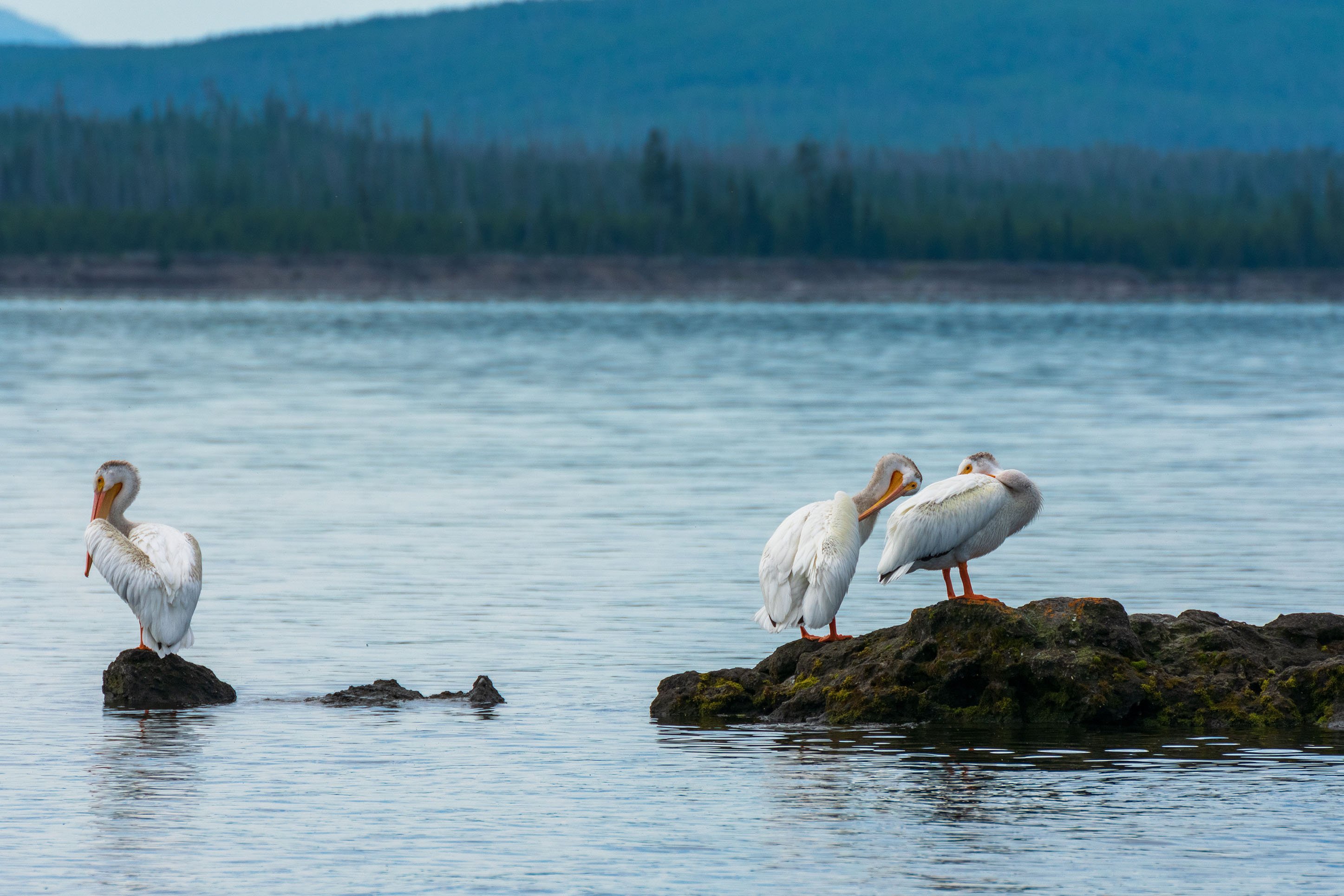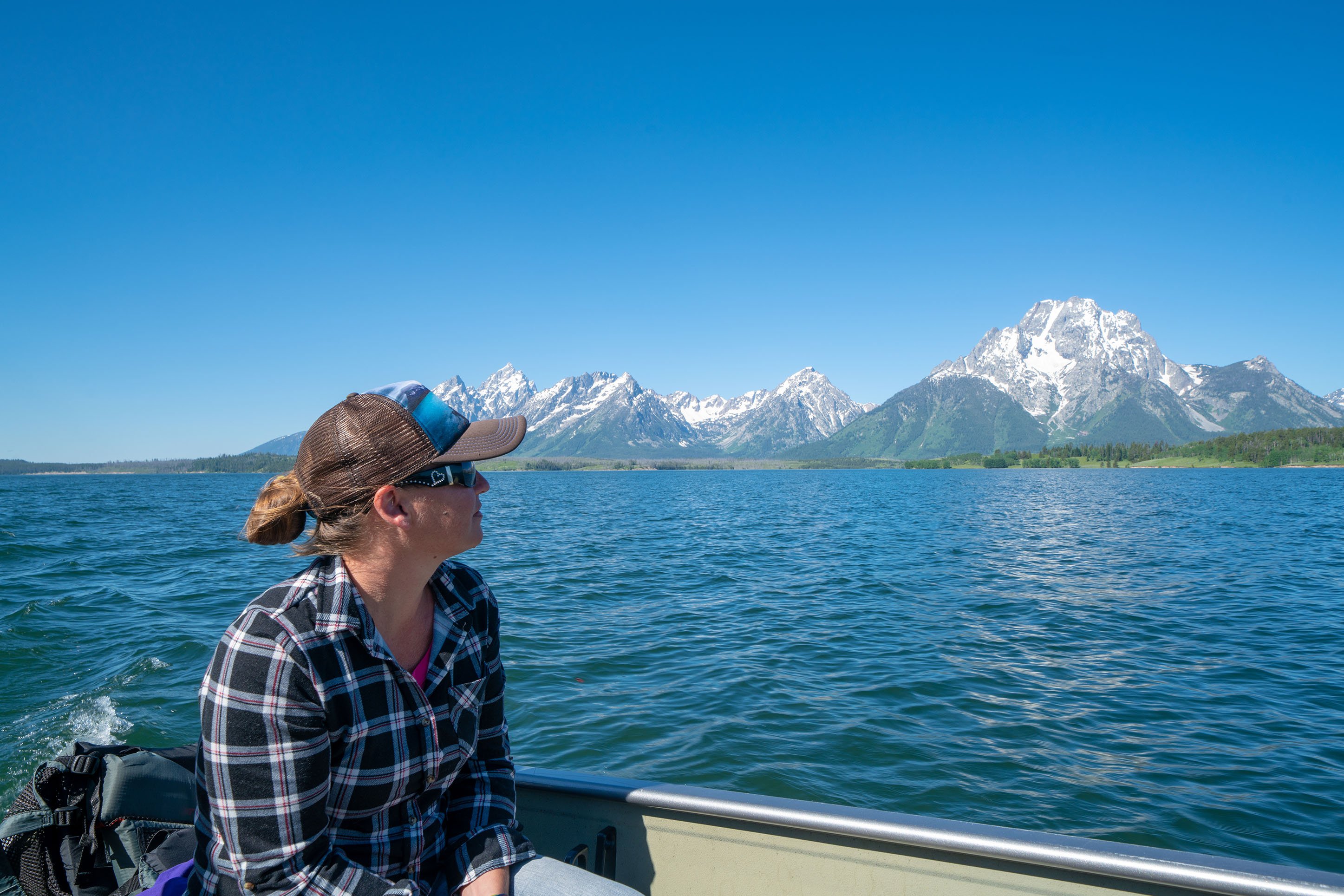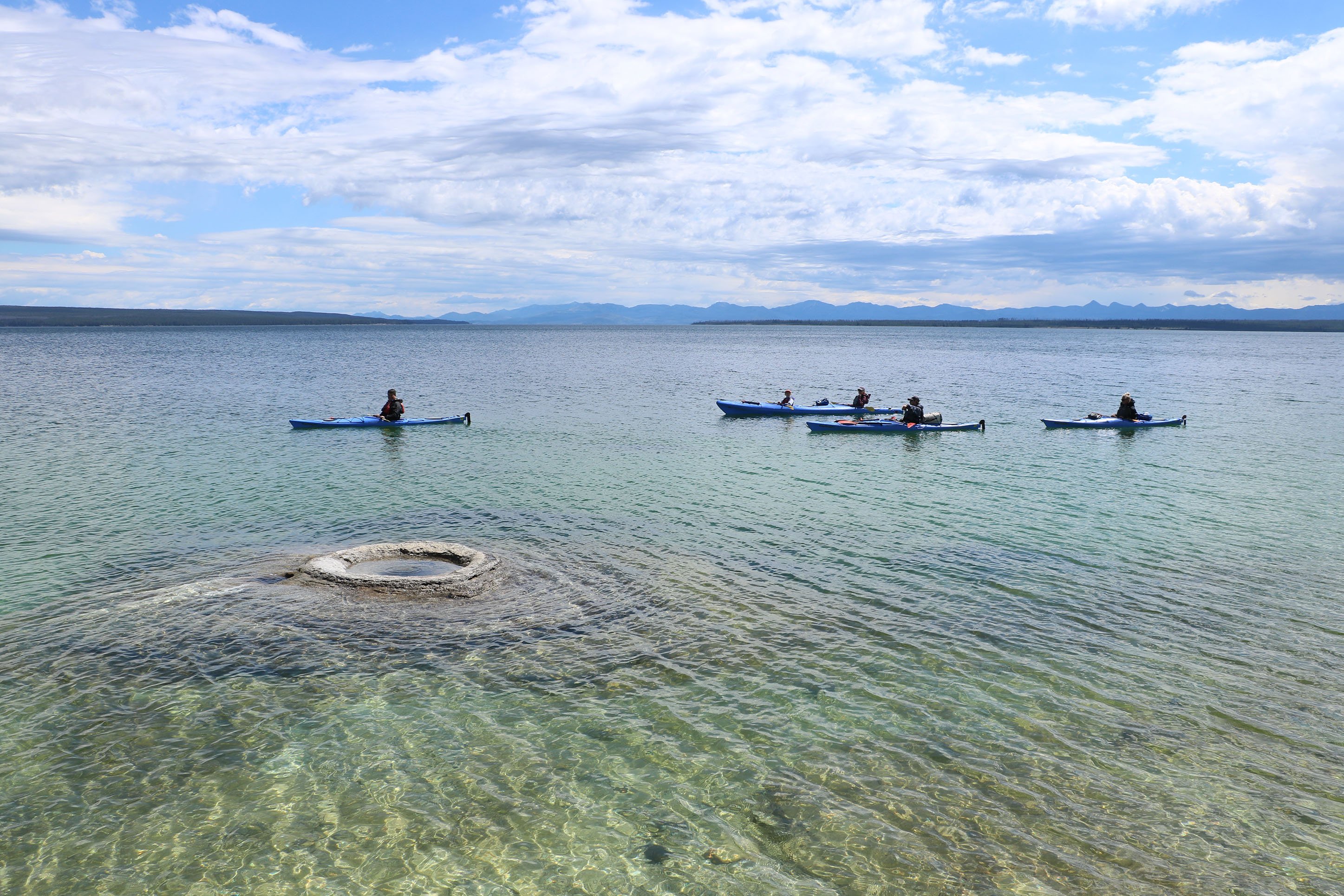Summer Activities on Yellowstone’s Lakes
Yellowstone National Park has an astonishing number of lakes – over 600, covering 107,000 acres. Some of them, like Yellowstone Lake and Shoshone Lake, are quite large, while other smaller alpine lakes are more remote and intimate. There are plenty of ways to explore the lakes and enjoy bird watching, wildlife watching, and backcountry camping.
Yellowstone, Shoshone, Lewis, and Heart Lakes are the four largest lakes. Shoshone and Heart are wilderness lakes, meaning you must hike into them, but Lewis and Yellowstone Lakes are accessible by car.
Shoshone, Lewis, and Heart Lakes drain into the Snake River and eventually the Pacific Ocean. These three lakes are best for fishing – they are all stocked with brown and rainbow trout, which are non-native, but they did not have fish before they were stocked. Lewis Lake allows motorized boats, but you must have a permit and be sure your boat is clean, dry, and free from invasive species.
Heart Lake
Heart Lake is the second-largest backcountry lake and one of the most popular. Tucked at the base of Mount Sheridan, elk, trumpeter swans, grizzly bears, and gray wolves all visit this area. (Note: bear management areas around Heart Lake are closed to hikers from April 1 through June 30.) It’s a 16.2-mile out-and-back hike, but if you can spend a couple of days at one of the lakeside campgrounds, you’ll have plenty of time to hike to the top of Mount Sheridan.

Shoshone Lake
The US Fish and Wildlife Services believes Shoshone Lake may be the largest lake in the Lower 48 and inaccessible by road. It’s 205 feet at its maximum depth, spans 8,050 acres, and sits at 7,795 feet. Motorized boats are not allowed, but you can reach the lake by taking a canoe around Lewis Lake and through the Lewis River Channel (there is a section where you will need to portage or drag your canoe through the water.)
Yellowstone Lake
Yellowstone Lake is the largest high-elevation lake in North America, covering 139 square miles. It’s 20 miles long and 14 miles wide and freezes over completely each winter. It thaws in late May or early June, but the water temperature generally doesn’t get over 41 degrees in the summer, so swimming is not advised. Ironically, there are also hot spots in the lake, with the hottest temperature recorded at 252 degrees at Mary Bay.
Motorized boats are allowed on Yellowstone Lake, but it’s a large lake with many variables, so if you’re looking to get out on the water, there are plenty of options; the Yellowstone Lake Scenicruise is a great way to relax and tour the lake. Or, take a guided fishing or sightseeing charter boat. A Backcountry Shuttle Boat Service is available for those wanting to do a backcountry adventure, and if you’re a competent boat driver, rental boats are also available.
You can explore West Thumb Bay, a massive crater from a hydrothermal eruption 174,000 years ago. West Thumb Geyser Basin has some of the deepest and clearest hot pools on earth, and you can also see hot springs and geysers right in the lake! Another exciting feature of the lake is the black sand beaches!
Be sure to stop at the Fishing Bridge Visitor Center, where they have a 3-D map of the lake bottom and a great collection of taxidermy native birds.

Chain of Lakes
Another fun area to explore is the “Chain of Lakes” on the South side of Mount Washburn. The 10.7-mile point-to-point trail passes four stunning alpine lakes between the Canyon and Norris areas: Cascade, Grebe, Wolf, and Ice. There are beautiful campsites along these lakes, so if you prefer a leisurely hike, plan to get a backcountry camping permit and enjoy the solitude!
Safety First!
Remember, if you are out on the lakes, these waters can be dangerous, and inclement weather can appear at any time. Be sure to stick close to the shore and carry a US Coast Guard-approved, wearable PFD (Type I, II, III, or V) for each person on board. Using jet skis, personal watercraft, airboats, submersibles, and similar vessels is prohibited in Yellowstone, as is towing water skiers, wakeboards, parasails, or performing similar activities.
If you enjoyed this blog, take a look at some of our other related articles:
- 5 Easy Hikes in Yellowstone National Park
- Expert Guide to Spotting Animals in Yellowstone
- Things to Know When Visiting Bozeman in the Spring
In our never-ending quest to keep up with all things new in Bozeman, we have been producing content for years and can't possibly update every blog when new businesses open or existing businesses close. Please reference the publish date and do your own due diligence when making plans.


